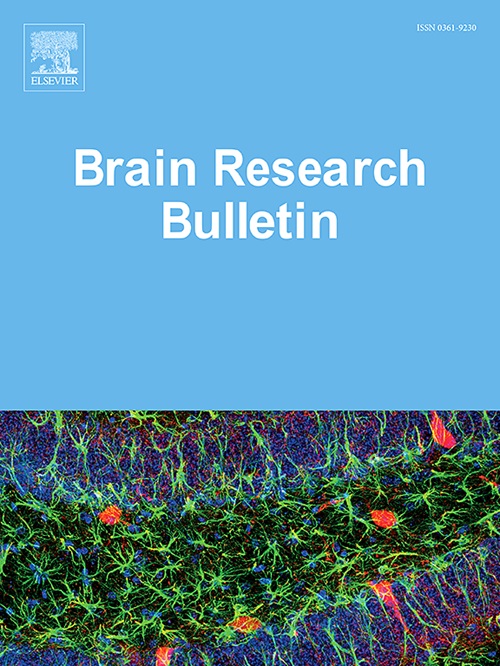Brain-thyroid crosstalk: 18F-FDG-PET/MRI evidence in patients with follicular thyroid adenomas
IF 3.5
3区 医学
Q2 NEUROSCIENCES
引用次数: 0
Abstract
Objective
The hypothalamic-pituitary-thyroid axis has been well-known. However, whether follicular thyroid adenoma (FTA) could affect brain glucose metabolism is still unknown. Therefore, we explored the brain glucose metabolic characteristics of FTA with Fluorodeoxyglucose F18 positron emission tomography/magnetic resonance imaging.
Methods
Totally 30 FTA patients without clinical symptoms (FTA group), and 60 age- and sex-matched healthy controls (HC group) were included and randomly divided into cohort A and B in 2:1 ratio. Cohort A was analyzed with scaled sub-profile model/principal component analysis (SSM/PCA) for pattern identification. Cohort B was calculated the individual scores to validate expression of the pattern. Then we calculated the metabolic connectivity based on characteristics of the pattern to investigate the underlying mechanism. Finally, we constructed metabolic brain networks and analyzed the topological properties to further explore the brain metabolic model.
Results
In SSM/PCA, FTA group showed an almost global, left-right symmetrical pattern. In metabolic connectivity, FTA group showed increased metabolic connectivity in brain regions of the sensorimotor network, ventral default mode network (DMN), posterior salient network, right executive control network (ECN), visuospatial network and language network when compared to HC group, and showed decreased connectivity in dorsal DMN and left ECN. In topological properties of brain network, FTA group showed an increased betweenness centrality (BC) in left rolandic operculum, a decreased BC in superior temporal gyrus, increased BC and Degree in right precentral gyrus, increased D in right parahippocampal gyrus and left hippocampus, and decreased D and efficiency in right orbital part of middle frontal gyrus (FDR correction for multiple comparisons, P < 0.05).
Conclusion
Although FTA patients are not yet symptomatic, their brain metabolic characteristics include extensive brain alterations, disrupted internal connectivity, not only involving brain regions associated with endocrine activity, but also brain networks and regions associated with motor, emotion and cognition.
求助全文
约1分钟内获得全文
求助全文
来源期刊

Brain Research Bulletin
医学-神经科学
CiteScore
6.90
自引率
2.60%
发文量
253
审稿时长
67 days
期刊介绍:
The Brain Research Bulletin (BRB) aims to publish novel work that advances our knowledge of molecular and cellular mechanisms that underlie neural network properties associated with behavior, cognition and other brain functions during neurodevelopment and in the adult. Although clinical research is out of the Journal''s scope, the BRB also aims to publish translation research that provides insight into biological mechanisms and processes associated with neurodegeneration mechanisms, neurological diseases and neuropsychiatric disorders. The Journal is especially interested in research using novel methodologies, such as optogenetics, multielectrode array recordings and life imaging in wild-type and genetically-modified animal models, with the goal to advance our understanding of how neurons, glia and networks function in vivo.
 求助内容:
求助内容: 应助结果提醒方式:
应助结果提醒方式:


